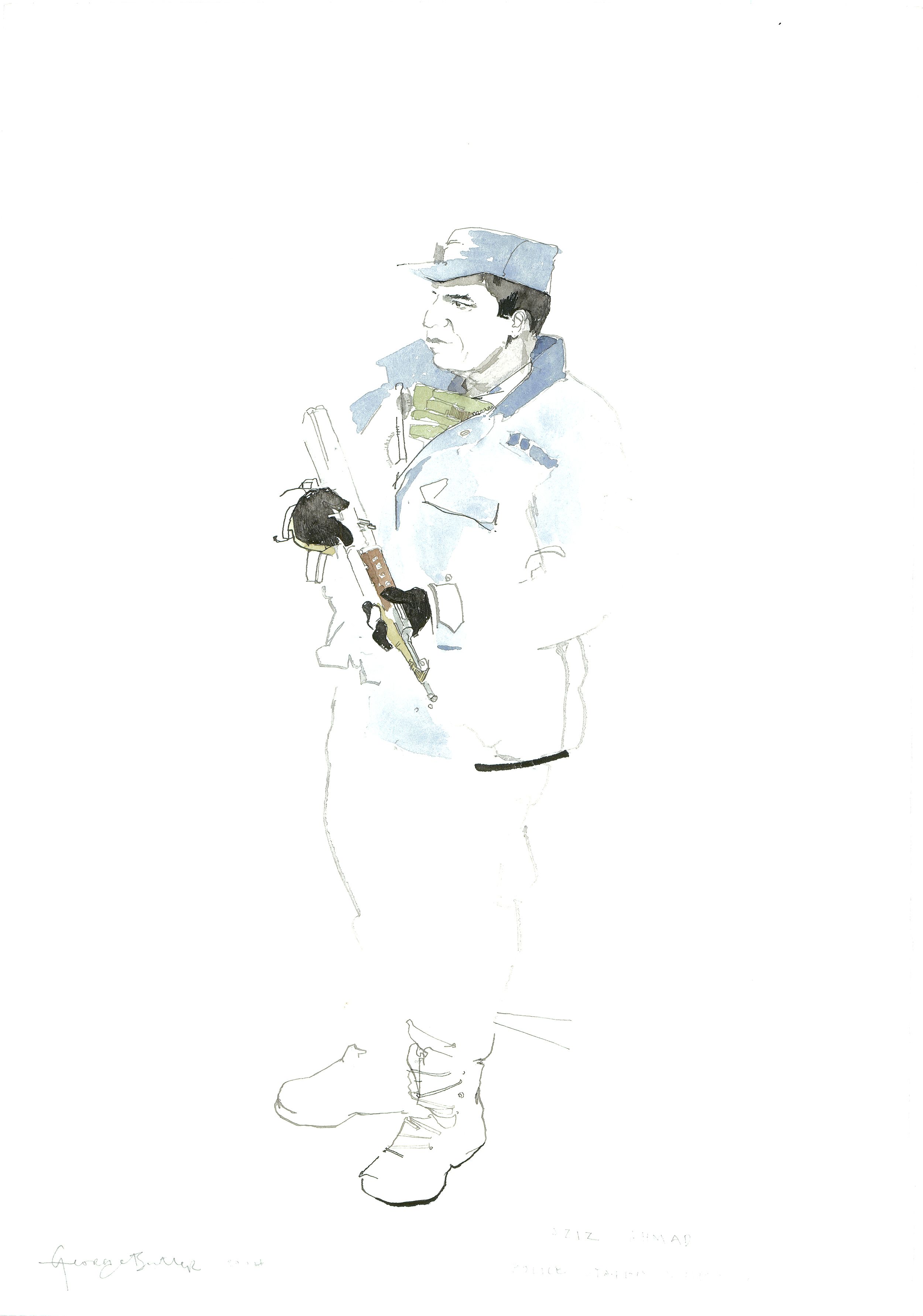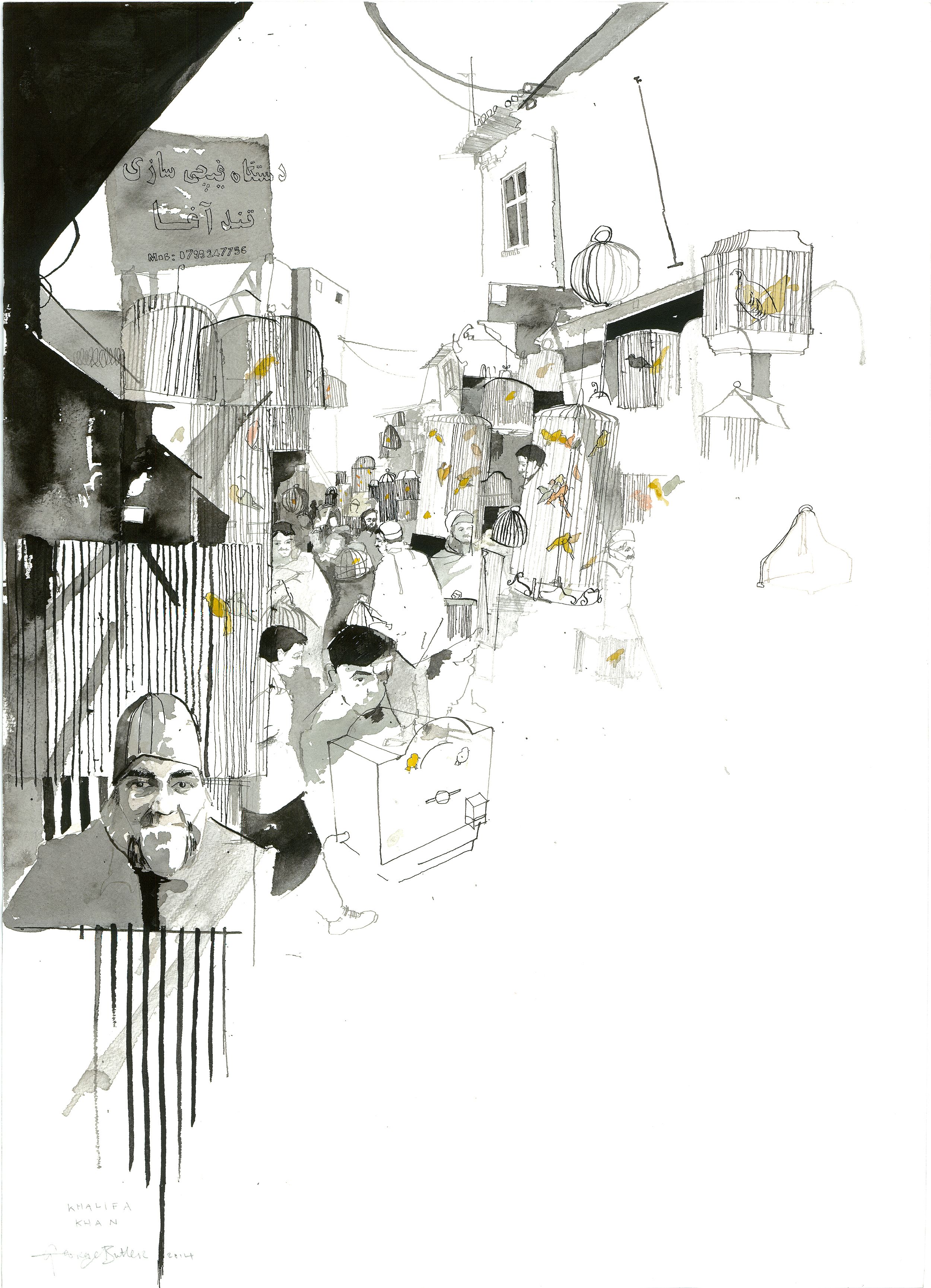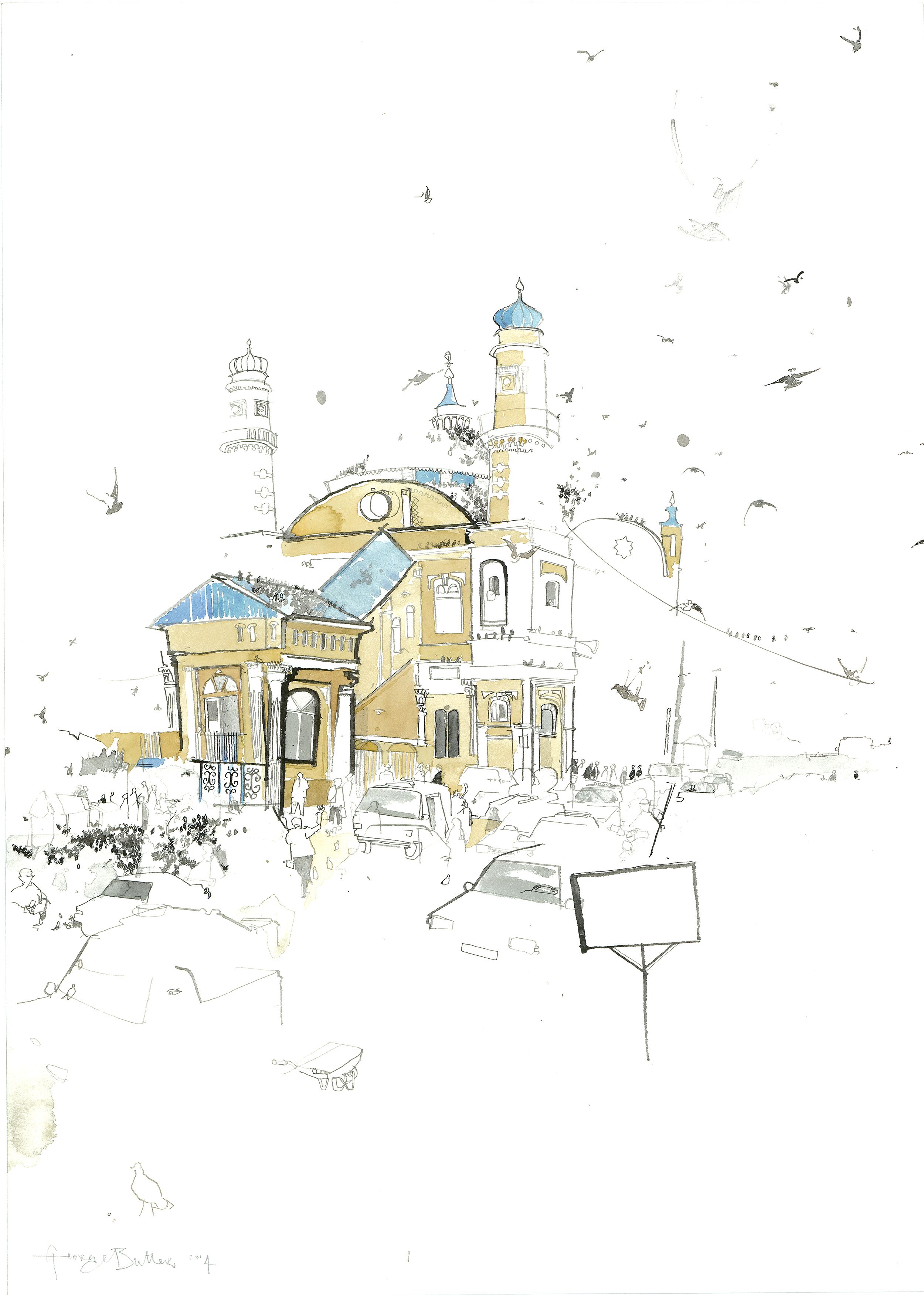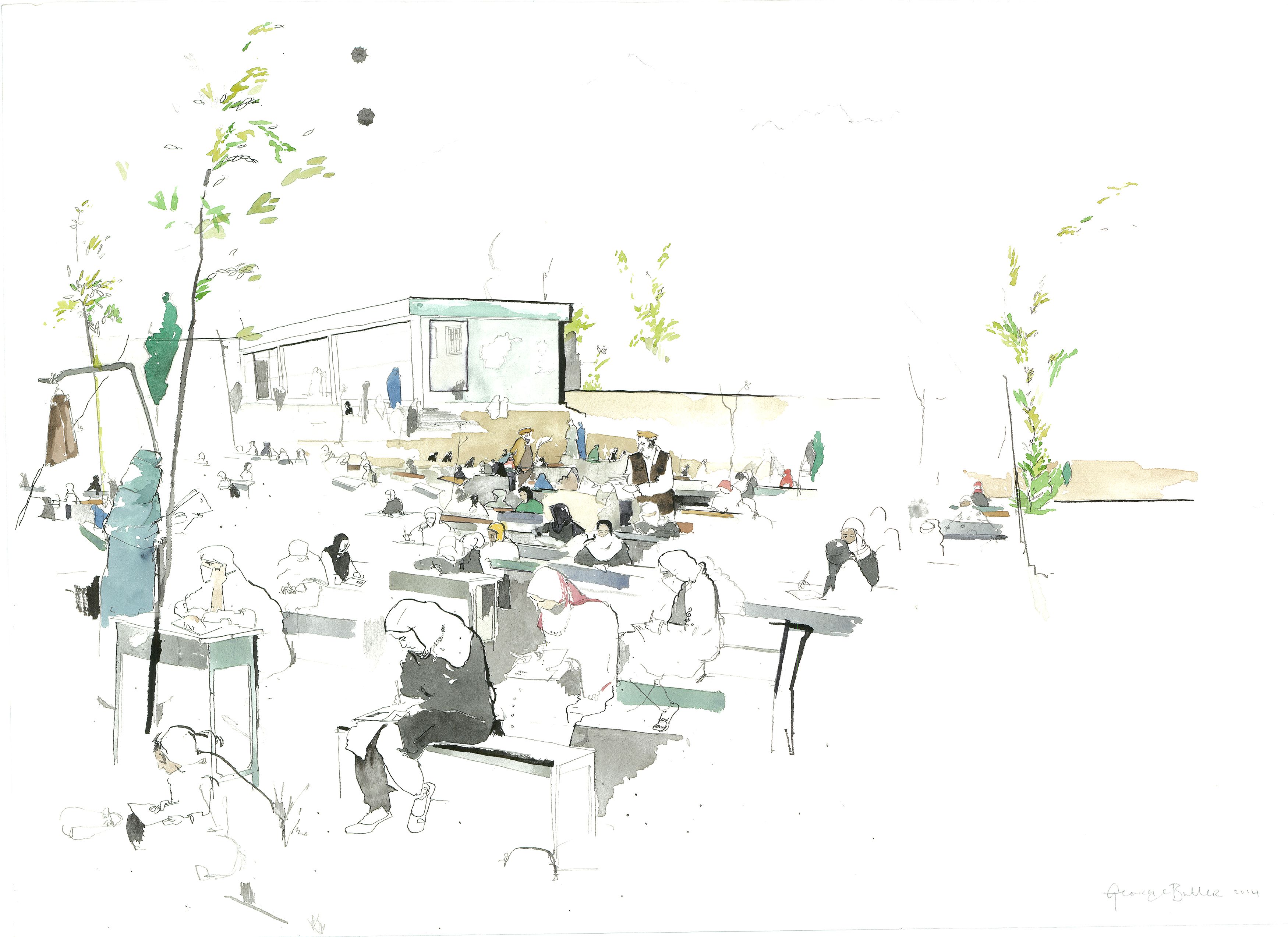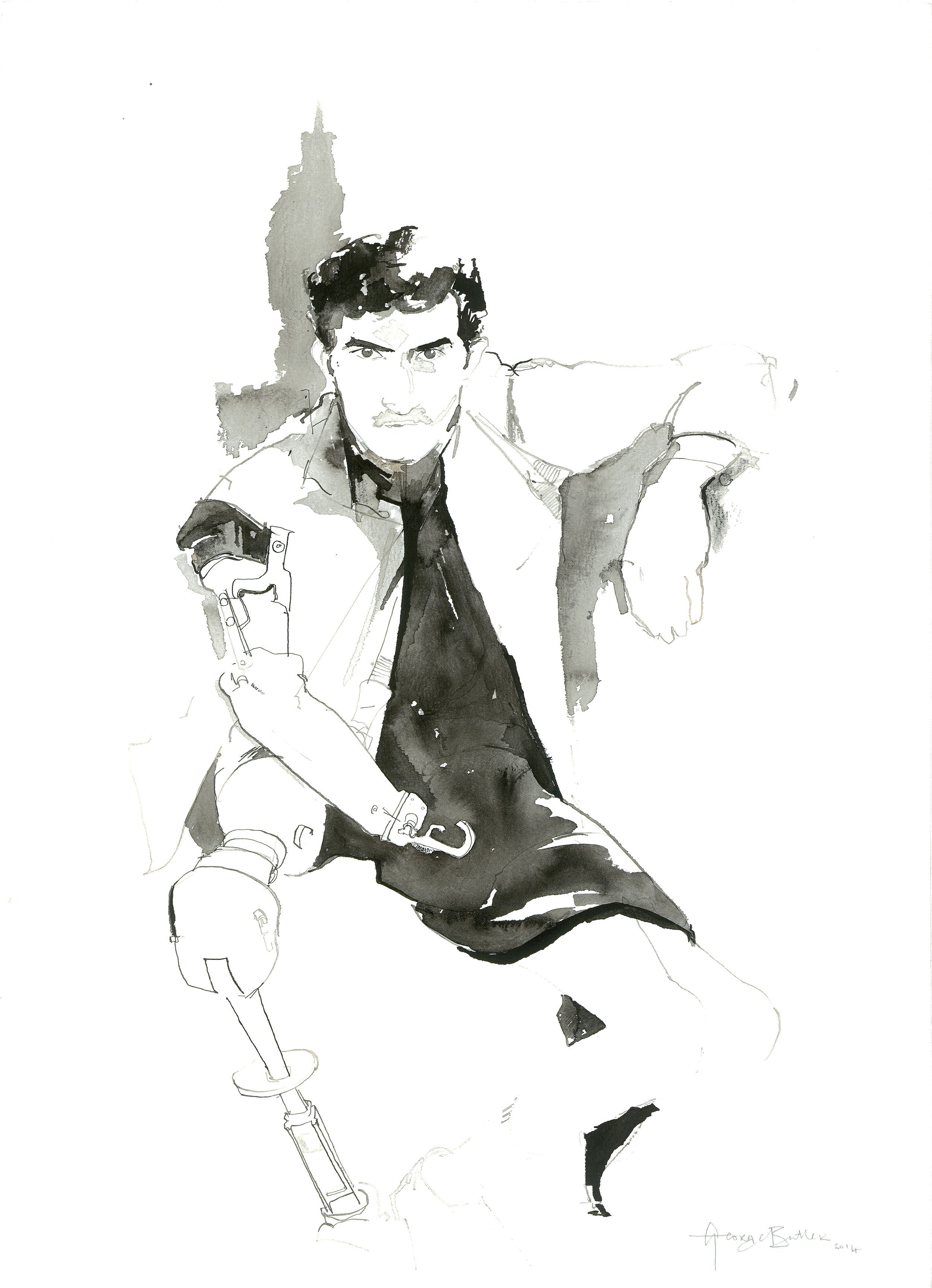As a thoughtful exhibition on images of war opens at Tate Modern in London, Monocle visits artist George Butler. His ink-and-watercolour scenes bring a new depth to reportage more often the preserve of combat photographers.
We have never been closer to, nor further away from, the reality of war. Since Vietnam became the first conflict to be televised, technology has shrunk the gap between those fighting and dying and the rest of us, in whose name they do so. Images and videos from the battlefield reach smartphones at the same time as situation rooms. And yet most of the images that find their way into our living rooms only hint at the brutality. We saw the “shock and awe” of the bombardment of Iraq from a distance.
In this context George Butler’s drawings from Afghanistan—seen for the first time here—appear like a throwback to a time when our understanding of war was based on dispatches that arrived in newspapers a week after the battle.
Visit Monocle to view the video and read the full story.

